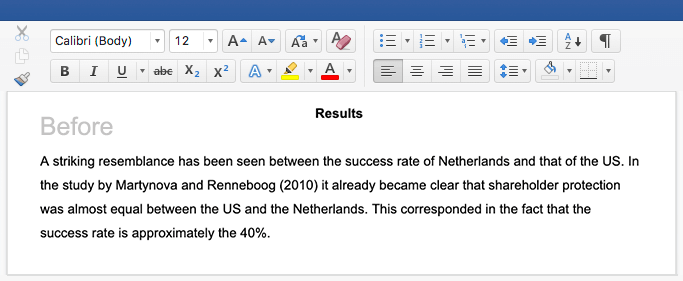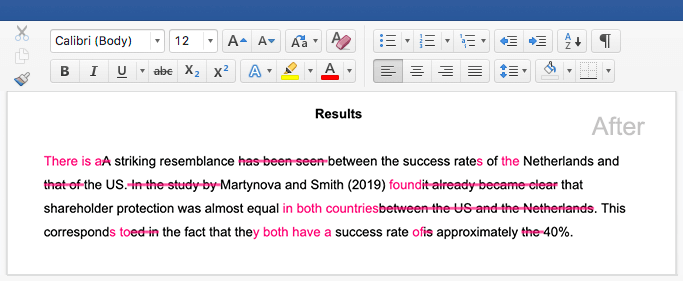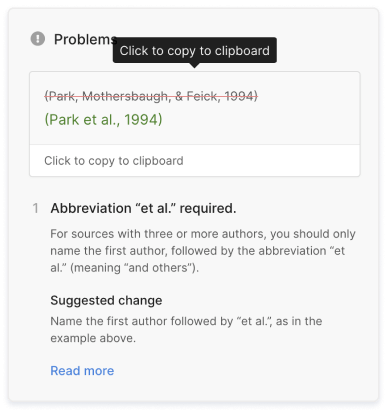Citation Styles Guide | Examples for All Major Styles
A citation style is a set of guidelines on how to cite sources in your academic writing. You always need a citation whenever you quote, paraphrase, or summarize a source to avoid plagiarism. How you present these citations depends on the style you follow. Scribbr’s citation generator can help!
Different styles are set by different universities, academic associations, and publishers, often published in an official handbook with in-depth instructions and examples.
There are many different citation styles, but they typically use one of three basic approaches: parenthetical citations, numerical citations, or note citations.
Types of citation: Parenthetical, note, numerical
The clearest identifying characteristic of any citation style is how the citations in the text are presented. There are three main approaches:
- Parenthetical citations: You include identifying details of the source in parentheses in the text—usually the author’s last name and the publication date, plus a page number if relevant (author-date). Sometimes the publication date is omitted (author-page).
- Numerical citations: You include a number in brackets or in superscript, which corresponds to an entry in your numbered reference list.
- Note citations: You include a full citation in a footnote or endnote, which is indicated in the text with a superscript number or symbol.
Citation styles also differ in terms of how you format the reference list or bibliography entries themselves (e.g., capitalization, order of information, use of italics). And many style guides also provide guidance on more general issues like text formatting, punctuation, and numbers.
Which citation style should I use?
In most cases, your university, department, or instructor will tell you which citation style you need to follow in your writing. If you’re not sure, it’s best to consult your institution’s guidelines or ask someone. If you’re submitting to a journal, they will usually require a specific style.
Sometimes, the choice of citation style may be left up to you. In those cases, you can base your decision on which citation styles are commonly used in your field. Try reading other articles from your discipline to see how they cite their sources, or consult the table below.
| Discipline | Typical citation style(s) |
|---|---|
| Economics | Harvard |
| Engineering & IT | IEEE |
| Humanities | Chicago notes and bibliography; Harvard; MLA |
| Law | Bluebook; OSCOLA |
| Medicine | AMA; NLM; Vancouver |
| Political science | APSA |
| Psychology | APA |
| Sciences | ACS; Chicago author-date; CSE citation-name or citation-sequence; CSE name-year; Harvard |
| Social sciences | AAA; APA; ASA; Chicago author-date |
Parenthetical citation styles
AAA
The American Anthropological Association (AAA) recommends citing your sources using Chicago author-date style. AAA style doesn’t have its own separate rules. This style is used in the field of anthropology.
| AAA reference entry | Clarke, Kamari M. 2013. “Notes on Cultural Citizenship in the Black Atlantic World.” Cultural Anthropology 28, no. 3 (August): 464–474. https://www.jstor.org/stable/43898483. |
| AAA in-text citation | (Clarke 2013) |
APA
APA Style is defined by the 7th edition of the Publication Manual of the American Psychological Association. It was designed for use in psychology, but today it’s widely used across various disciplines, especially in the social sciences.
| APA reference entry | Wagemann, J. & Weger, U. (2021). Perceiving the other self: An experimental first-person account of nonverbal social interaction. The American Journal of Psychology, 134(4), 441–461. https://doi.org/10.5406/amerjpsyc.134.4.0441 |
| APA in-text citation | (Wagemann & Weger, 2021) |
Generate accurate APA citations with Scribbr
APSA
The citation style of the American Political Science Association (APSA) is used mainly in the field of political science.
| APSA reference entry | Ward, Lee. 2020. “Equity and Political Economy in Thomas Hobbes.” American Journal of Political Science, 64 (4): 823–35. doi: 10.1111/ajps.12507. |
| APSA in-text citation | (Ward 2020) |
ASA
The citation style of the American Sociological Association (ASA) is used primarily in the discipline of sociology.
| ASA reference entry | Kootstra, Anouk. 2016. “Deserving and Undeserving Welfare Claimants in Britain and the Netherlands: Examining the Role of Ethnicity and Migration Status Using a Vignette Experiment.” European Sociological Review 32(3): 325–338. doi:10.1093/esr/jcw010. |
| ASA in-text citation | (Kootstra 2016) |
Chicago author-date
Chicago author-date style is one of the two citation styles presented in the Chicago Manual of Style (17th edition). It’s used mainly in the sciences and social sciences.
| Chicago reference entry | Encarnação, João, and Gonçalo Calado. 2018. “Effects of Recreational Diving on Early Colonization Stages of an Artificial Reef in North-East Atlantic.” Journal of Coastal Conservation 22, no. 6 (December): 1209–1216. https://www.jstor.org/stable/45380397. |
| Chicago author-date citation | (Encarnação and Calado 2018) |
CSE name-year
The citation style of the Council of Science Editors (CSE) is used in various scientific disciplines. It includes multiple options for citing your sources, including the name-year system.
| CSE name-year reference entry | Graham JR. 2019. The structure and stratigraphical relations of the Lough Nafooey Group, South Mayo. Irish Journal of Earth Sciences. 37: 1–18. |
| CSE name-year citation | (Graham 2019) |
Harvard
Harvard style is often used in the field of economics. It is also very widely used across disciplines in UK universities. There are various versions of Harvard style defined by different universities—it’s not a style with one definitive style guide.
| Harvard bibliography entry | Hoffmann, M. (2016) ‘How is information valued? Evidence from framed field experiments’, The Economic Journal, 126(595), pp. 1884–1911. doi:10.1111/ecoj.12401. |
| Harvard in-text citation | (Hoffmann, 2016) |
Check out Scribbr’s Harvard Reference Generator
MLA
MLA style is the official style of the Modern Language Association, defined in the MLA Handbook (9th edition). It’s widely used across various humanities disciplines. Unlike most parenthetical citation styles, it’s author-page rather than author-date.
| MLA Works Cited entry | Davidson, Clare. “Reading in Bed with Troilus and Criseyde.” The Chaucer Review, vol. 55, no. 2, Apr. 2020, pp. 147–170. https://doi.org/10.5325/chaucerrev.55.2.0147. |
| MLA in-text citation | (Davidson 155) |
Generate accurate MLA citations with Scribbr
Numerical citation styles
ACS
The American Chemical Society (ACS) provides guidelines for a citation style using numbers in superscript or italics in the text, corresponding to entries in a numbered reference list at the end. It is used in chemistry.
| ACS reference entry | 1. Hutchinson, G.; Alamillo-Ferrer, C.; Fernández-Pascual, M.; Burés, J. Organocatalytic Enantioselective α-Bromination of Aldehydes with N-Bromosuccinimide. J. Org. Chem. 2022, 87, 7968–7974. |
AMA
The American Medical Association (AMA) provides guidelines for a numerical citation style using superscript numbers in the text, which correspond to entries in a numbered reference list. It is used in the field of medicine.
| AMA reference entry | 1. Jabro JD. Predicting saturated hydraulic conductivity from percolation test results in layered silt loam soils. J Environ Health. 2009;72(5):22–27. |
CSE citation-name or citation-sequence
CSE style includes multiple options for citing your sources, including the citation-name and citation-sequence systems. Your references are listed alphabetically in the citation-name system; in the citation-sequence system, they appear in the order in which you cited them.
| CSE citation-sequence or citation-name reference entry | 1. Nell CS, Mooney KA. Plant structural complexity mediates trade-off in direct and indirect plant defense by birds. Ecology. 2019;100(10):1–7. |
IEEE
The Institute of Electrical and Electronics Engineers (IEEE) provides guidelines for citing your sources with IEEE in-text citations that consist of numbers enclosed in brackets, corresponding to entries in a numbered reference list. This style is used in various engineering and IT disciplines.
| IEEE reference entry | 1. J. Ive, A. Max, and F. Yvon, “Reassessing the proper place of man and machine in translation: A pre-translation scenario,” Mach. Transl., vol. 32, no. 4, pp. 279–308, Dec. 2018, doi: 10.1007/s10590-018-9223-9. |
NLM
The National Library of Medicine (NLM) citation style is defined in Citing Medicine: The NLM Style Guide for Authors, Editors, and Publishers (2nd edition).
| NLM reference entry | 1. Hage J, Valadez JJ. Institutionalizing and sustaining social change in health systems: the case of Uganda. Health Policy Plan. 2017 Nov;32(9):1248–55. doi:10.1093/heapol/czx066. |
Vancouver
Vancouver style is also used in various medical disciplines. As with Harvard style, a lot of institutions and publications have their own versions of Vancouver—it doesn’t have one fixed style guide.
| Vancouver reference entry | 1. Bute M. A backstage sociologist: Autoethnography and a populist vision. Am Soc. 2016 Mar 23; 47(4):499–515. Available from: https://link.springer.com/article/10.1007/s12108-016-9307-z doi:10.1007/s12108-016-9307-z |
Note citation styles
Bluebook
The Bluebook: A Uniform System of Citation is the main style guide for legal citations in the US. It’s widely used in law, and also when legal materials need to be cited in other disciplines.
| Bluebook footnote citation | 1 David E. Pozen, Freedom of Information Beyond the Freedom of Information Act, 165, U. P🇦. L. R🇪🇻. 1097, 1115 (2017). |
Chicago notes and bibliography
Chicago notes and bibliography is one of the two citation styles presented in the Chicago Manual of Style (17th edition). It’s used mainly in the humanities.
| Chicago bibliography entry | Best, Jeremy. “Godly, International, and Independent: German Protestant Missionary Loyalties before World War I.” Central European History 47, no. 3 (September 2014): 585–611. https://doi.org/10.1017/S0008938914001654. |
| Chicago footnote | 1. Jeremy Best, “Godly, International, and Independent: German Protestant Missionary Loyalties before World War I,” Central European History 47, no. 3 (September 2014): 599. https://doi.org/10.1017/S0008938914001654. |
OSCOLA
The Oxford University Standard for the Citation of Legal Authorities (OSCOLA) is the main legal citation style in the UK (similar to Bluebook for the US).
| OSCOLA footnote citation | 1. Chris Thornhill, ‘The Mutation of International Law in Contemporary Constitutions: Thinking Sociologically about Political Constitutionalism’ [2016] MLR 207. |
Frequently asked questions about citation styles
- What are the different types of citation styles?
-
There are many different citation styles used across different academic disciplines, but they fall into three basic approaches to citation:
- Parenthetical citations: Including identifying details of the source in parentheses—usually the author’s last name and the publication date, plus a page number if available (author-date). The publication date is occasionally omitted (author-page).
- Numerical citations: Including a number in brackets or superscript, corresponding to an entry in your numbered reference list.
- Note citations: Including a full citation in a footnote or endnote, which is indicated in the text with a superscript number or symbol.
- Which citation style should I use?
-
Check if your university or course guidelines specify which citation style to use. If the choice is left up to you, consider which style is most commonly used in your field.
- APA Style is the most popular citation style, widely used in the social and behavioral sciences.
- MLA style is the second most popular, used mainly in the humanities.
- Chicago notes and bibliography style is also popular in the humanities, especially history.
- Chicago author-date style tends to be used in the sciences.
Other more specialized styles exist for certain fields, such as Bluebook and OSCOLA for law.
The most important thing is to choose one style and use it consistently throughout your text.
- What are scientific citation styles?
-
A scientific citation style is a system of source citation that is used in scientific disciplines. Some commonly used scientific citation styles are:
- Who uses APA Style?
-
APA format is widely used by professionals, researchers, and students in the social and behavioral sciences, including fields like education, psychology, and business.
Be sure to check the guidelines of your university or the journal you want to be published in to double-check which style you should be using.
- Who uses MLA style?
-
MLA Style is the second most used citation style (after APA). It is mainly used by students and researchers in humanities fields such as literature, languages, and philosophy.
Cite this Scribbr article
If you want to cite this source, you can copy and paste the citation or click the “Cite this Scribbr article” button to automatically add the citation to our free Citation Generator.
Caulfield, J. (2022, November 07). Citation Styles Guide | Examples for All Major Styles. Scribbr. Retrieved April 24, 2024, from https://www.scribbr.com/citing-sources/citation-styles/




